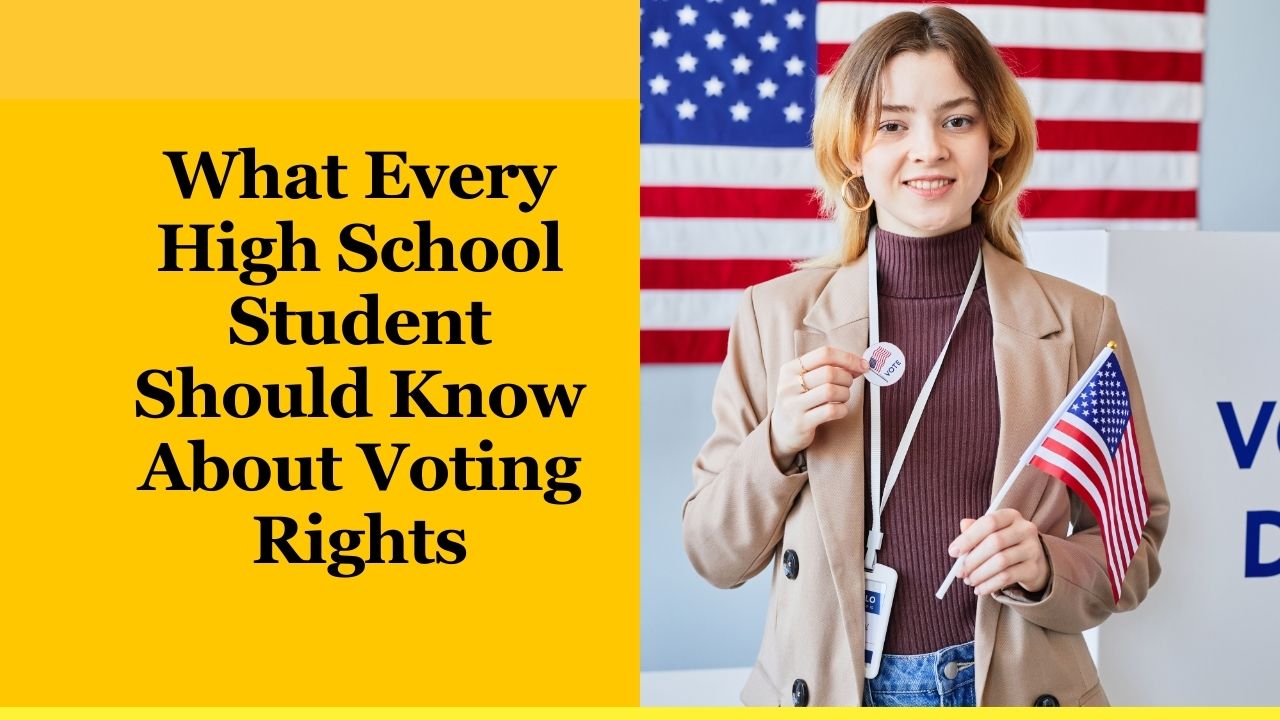It’s essential for high school students to understand their voting rights, how they can register, and the impact of policies affecting them.
As democracy evolves, knowing the legal age, preregistration options, and real barriers can turn first-time voters into lifelong participants. Here’s everything high schoolers need to know in 2025.
Voting Age and the 26th Amendment
- The 26th Amendment to the U.S. Constitution guarantees the right to vote for citizens aged 18 or older in state and federal elections. It was ratified on July 1, 1971.
- This means that while all high school students (typically 14–18) must wait until 18 to vote, many states now offer preregistration systems to get ahead of the game.
Preregistration: Register Before You’re 18
Many states allow teens to preregister before they turn 18, so they are automatically eligible to vote upon reaching the voting age.
| State Group | Preregistration Age | What It Means for High Schoolers |
|---|---|---|
| 18 states + D.C. | 16 | Eligible students can preregister at age 16. |
| 4 states | 17 | Preregistration begins at age 17. |
| 6 states | Other thresholds | Examples include 15 in Colorado (from 2025), 17½ in Missouri. |
| Remaining 22 states | Before next election | Register once turning 18 by next general election. |
Takeaway: If your state allows preregistration, don’t wait—register at 16 or 17 and forget the hassle later.
Why Young Voter Turnout Matters
- In elections, youth turnout (ages 18–29) mattered in 2024: only about 47% cast ballots—a slight drop from 2020.
- States with policies like automatic, same-day, or online voter registration saw higher youth turnout (around 49%) compared to states with stricter rules (44% average).
Implications for students: Voting isn’t just a right—it’s a powerful statement. Familiarizing yourself early with your state’s voting laws makes a difference in your voice being heard.
Common Barriers to Youth Voting
Even when eligible, many young people don’t vote due to:
- Time and information shortages: Over 31% didn’t vote because they were too busy or didn’t understand the process.
- Financial challenges: Populations with limited resources faced more difficulty registering or arranging absentee ballots.
- Access inequality: Youth of color and low-income students were less likely to vote by mail or have easy registration paths.
What Policies Help High Schoolers?
Key policies that improve youth electoral participation include:
- Automatic Voter Registration (AVR) – registers eligible individuals at agencies like DMVs unless they opt out.
- Same-Day Registration (SDR) – allows registration on Election Day.
- Online Voter Registration (OVR) – perform all steps digitally.
- Preregistration – your advance registration activates when you turn 18.
These policies significantly reduce barriers and can raise youth turnout by several percentage points.
How High School Students Can Prepare
- Check your state’s rules for registration and preregistration age.
- Make a plan: mark your 18th birthday in your calendar and register as soon as you’re eligible.
- Understand voting methods: in-person, absentee/mail, or early voting—choose what’s best.
- Follow deadlines: registration and absentee application deadlines are often set weeks before Election Day.
- Boost civic knowledge: attend town hall events, follow local issues, or participate in school civics classes.
- Advocate: support senior-year voter drives, voter education in class, and school-based registration campaigns (student-led or through nonprofits).
The Role of Schools in Promoting Voting Rights
High schools play a critical role in ensuring students understand voting rights. Some states already mandate voter registration opportunities in schools, while others encourage civic engagement programs like mock elections or civics week activities. These programs give students hands-on experience in democracy before turning 18.
Schools can also partner with local election offices to provide registration forms, organize student ambassador programs, and even invite local officials to speak about elections. This exposure builds confidence and makes the transition to real voting smoother.
The Debate: Should Voting Age Be Lowered to 16?
- Internationally, some countries already allow 16-year-olds to vote in all or some elections.
- In the U.S., communities and advocates argue that allowing 16- and 17-year-olds to vote in local elections could increase engagement and civic habit formation.
- However, concerns remain around maturity, civic knowledge, and policy readiness.
Voting is a cornerstone of democratic participation, and knowing your rights is the first step. High school students should:
- Understand that 18 is the voting age federally, but preregistration can start at 16 or 17 in many states.
- Be aware of real barriers—time, money, policies—and how to navigate them.
- Familiarize themselves with registration options, key deadlines, and how to cast a ballot.
- Get involved in peer-led initiatives and advocate for more inclusive rules like preregistration and convenient voting.
Armed with knowledge and proactive planning, high school students can transform from bystanders into fully engaged citizens—setting a foundation for lifelong involvement.
The Power of the Youth Vote in Shaping Policy
Youth voters have the potential to shape national and local policy. For example, in recent elections, issues like climate change, student debt, education funding, and healthcare ranked among the top concerns for young people.
Candidates are increasingly tailoring policies and campaign messages to attract younger voters, recognizing that Generation Z and Millennials together make up nearly 44% of the U.S. electorate in 2025.
This shows that when students understand their rights and register early, they can significantly influence election outcomes and policymaking.
Using Technology to Stay Informed and Engaged
Today’s high school students have the advantage of digital tools to stay updated on voting rights and election processes. Mobile apps, official state election websites, and reminder services allow students to:
- Check registration status instantly
- Receive election reminders via text or email
- Learn about local candidates and ballot measures
- Access multilingual resources to overcome language barriers
By using these tools, students can reduce confusion, meet deadlines, and make well-informed choices. Leveraging technology ensures that young voters remain active participants in democracy even before they step into the polling booth.
FAQs
What is “preregistration” and why is it important?
Preregistration allows students younger than 18 (usually 16 or 17) to register early. Once they turn 18, they’re automatically eligible to vote—eliminating the last-minute rush and uncertainty.
Can I vote in local elections if I’m 17?
In most places, no. Voting typically requires being 18. But a few cities and jurisdictions allow 16- or 17-year-olds to vote in local or school board elections.
How can high school students help increase youth voter turnout?
They can host voter registration drives, include voter education in classroom curricula, volunteer for campaigns, or partner with civic organizations to spread awareness among peers.




